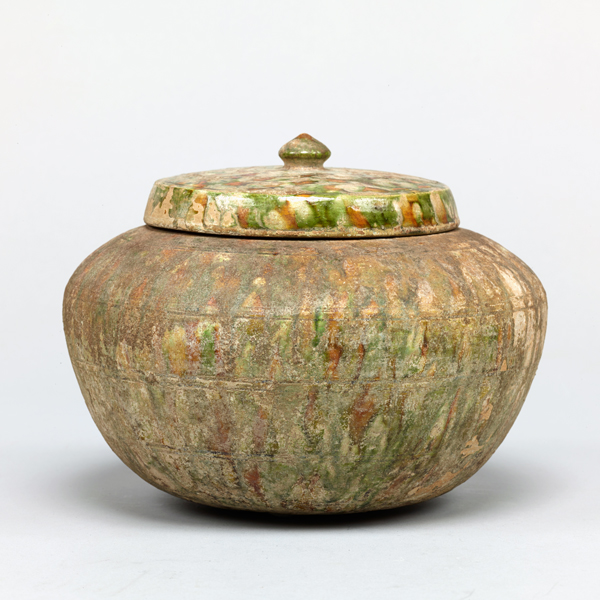古代の三彩
-

重要文化財 三彩有蓋壺 大阪府茨木市安威出土 奈良時代・8世紀
平成館 考古展示室
2023年9月20日(水) ~ 2024年3月10日(日)7世紀以降、日本では国家の成熟を目指すなかで遣隋使や遣唐使により中国から数多くの文物がもたらされました。とりわけ唐三彩は支配者階級にもてはやされ、骨蔵器や什器に用いられたことが出土品からうかがえます。ここでは、日本の三彩陶器を、その模倣の対象となった唐三彩とともに紹介します。
| 指定 | 名称 | 員数 | 作者・出土・伝来 | 時代・年代世紀 | 所蔵者・寄贈者・列品番号 | 備考 | |
| おすすめ | 重文 | 三彩有蓋壺 | 1合 | 大阪府茨木市安威出土 | 奈良時代・8世紀 | J-35627 | |
| 三彩小壺 | 1口 | 奈良市 平城京跡出土 | 奈良時代・8世紀 | 奈良文化財研究所蔵 | |||
| 三彩小壺蓋 | 1個 | 奈良市 平城京跡出土 | 奈良時代・8世紀 | 奈良文化財研究所蔵 | |||
| 三彩小壺 | 1口 | 奈良市 平城京跡出土 | 奈良時代・8世紀 | 奈良女子大学蔵 | |||
| おすすめ | 三彩有蓋小壺 | 1合 | 伝奈良県奈良市都祁出土 | 奈良時代・8世紀 | 個人蔵 | ||
| おすすめ | 三彩釉鬼瓦 | 1個 | 伝京都市 平安宮大極殿跡出土 | 平安時代・9世紀 | 福田循誘氏寄贈 J-24179 | ||
| 三彩小壺 | 1口 | 中国 | 唐時代・8世紀 | TG-680-1 | |||
| 三彩小円硯 | 1面 | 中国 | 初唐~盛唐・7~8世紀 | TG-680-2 | |||
| 三彩合子 | 1合 | 中国 | 唐時代・8世紀 | 横河民輔氏寄贈 TG-1120 | |||
| おすすめ | 三彩陶枕 | 1個 | 中国 | 唐時代・8世紀 | 江守名彦氏寄贈 TG-2053 |
